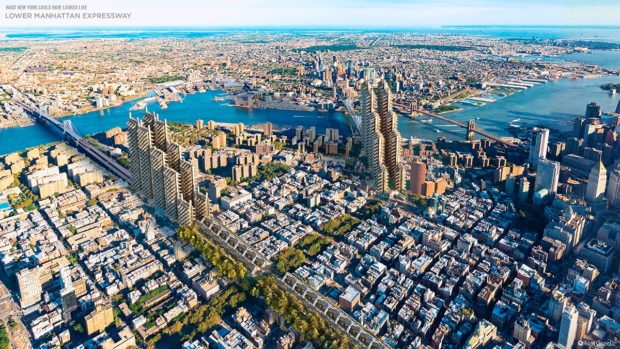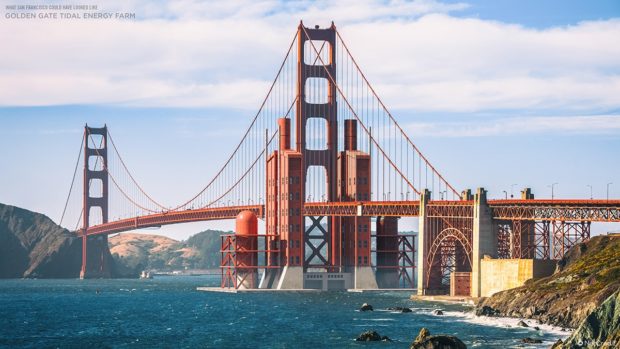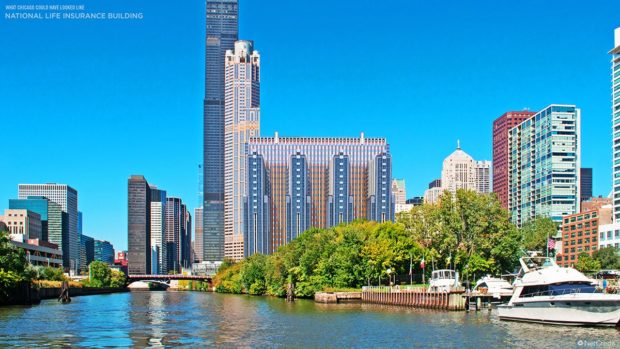Every city in the United States has its own unique landmarks, signature skyline, and special atmosphere. It is difficult to divide what the built environment looks like from the potential that existed before those structures were erected.
But in most cases, parts of those cities could have looked very different. The people at NetCredit have done their research into six particular occasions when plans were drawn for major developments in American’s biggest cities but were never realized – and they’ve given us a glimpse of how they might have looked had their construction gone ahead.
New York
Robert Moses believed the automobile was the future. His big idea was to create a Lower Manhattan Expressway (LOMEX) through the middle of New York City, devastating the Village, SoHo, and Washington Square Park by dislocating businesses and families. Thankfully an activist named Jane Jacobs stood up for the regular New Yorker, and Moses’ concrete eyesore never got built – or the city’s air would be even worse!

San Francisco
Did you ever think Frisco’s beautiful Golden Gate Bridge could be any more… you know, useful?
Marc L’Italien did. Back in 1990, he came up with the idea to adapt it as a tidal energy farm, which would also remove salt from the water so people could drink it. Engineering-wise it was audacious, and in terms of the environment it was the anti-LOMEX. Sadly, it never happened. Still, pretty bridge!

Chicago
Frank Lloyd Wright’s earthquake-proof National Life Insurance Building on Water Tower Square would have looked like a spectacular business-age cathedral, but it would also have changed the way we think about skyscrapers. FLW intended to cantilever the floors from concrete pylons so that the walls would no longer have load-bearing responsibilities; they could then be much thinner to create more space. Unfortunately for the architect, who also hoped his building would inject new life into his career, the architectural scene in Chicago was a little too conservative for his plan – which would certainly have made an impact on Chicago’s skyline.

Seattle
Over a century ago, civil engineer Virgil Bogue cooked up a plan to rival New York’s famous skyscrapers with a civic center that worked on a more democratic, horizontal axis. Mercer Island was to have become a park, while tunnels beneath Lake Washington would feed the city its car-bound commuters. But locals weren’t into such a disruptive project and Bogue was forced to let it go.
Los Angeles
Frank Lloyd Wright’s concept for Mayan-style government complex and civic center in LA was nothing short of spectacular. “If his plans had been carried out,” Anaïs Nin, would later write, “the world would have been dazzled by them.” However, it’s hard not to imagine that his overwhelming government building would have looked worryingly authoritarian from ground level and that the center as a whole would have aged badly.
Houston could have looked like
Helmut Jahn’s “romantic modernist” competition winner was all set to become Houston’s tallest building following an effort to extend the skyline upwards in 1982. But the Federal Aviation Administration nixed it because it was so tall and mighty it would have been a danger to passing aircraft. A subsequent oil bust meant that the endeavor was abandoned all together – and today the space that should have held Jahn’s rocket-shaped skyscraper is just a ground-level car park.
Which landmark would you like to have seen completed?
